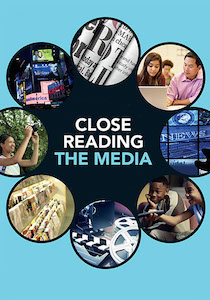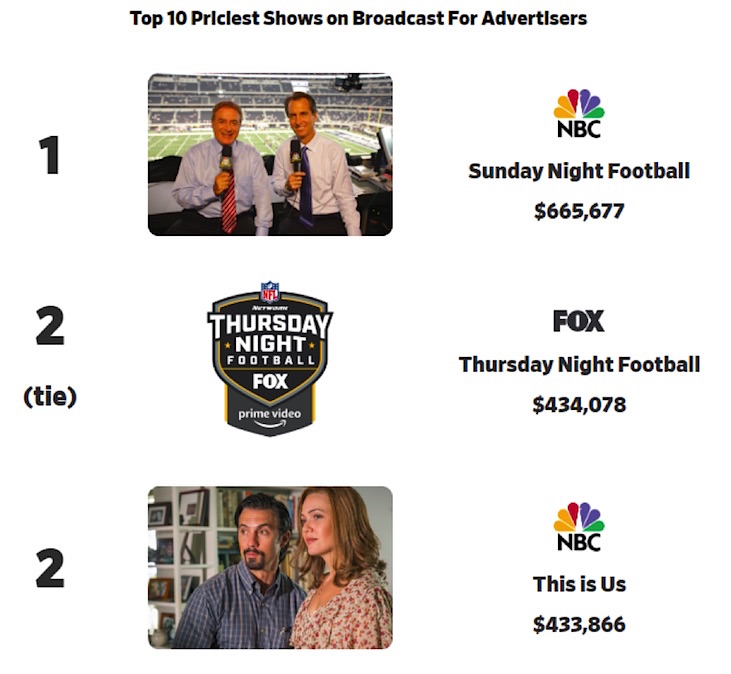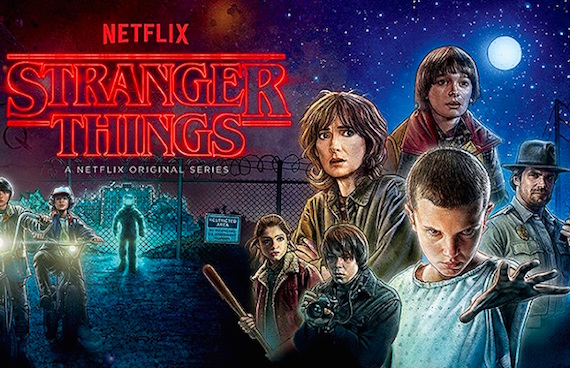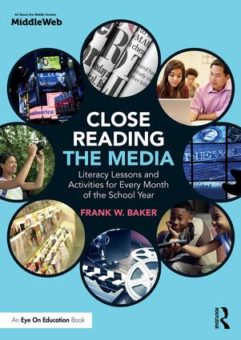Your Students’ Eyeballs Are Still Worth A Bundle
 We know our students love to watch television, even if that “watching” isn’t always in front of the actual TV these days.
We know our students love to watch television, even if that “watching” isn’t always in front of the actual TV these days.
I wrote on this topic a few years ago and it’s still true: Your students’ eyeballs are worth a bundle to advertisers looking for a youth demographic.
I really enjoy the fall season, when all of the new shows are unveiled, the most popular older ones return, and the competition for survival starts: we begin to see which programs will seize a satisfactory audience and which ones won’t.
I also like this time of year because that’s when the audience determines which TV programs/series will command the highest price for a 30-second commercial.
It’s a no-brainer really: the larger the viewing audience (the more eyeballs), the more money the TV networks can charge advertisers.
In October, Advertising Age, the periodical of the ad/marketing industry, published its annual list of what it calls the “priciest” shows of the 2018-2019 season. You can see the full list here.
The top two shows are both sports, including NBC’s Sunday Night Football, where a 30-second commercial costs an average of $665,677.

Three sitcoms are in the new top 10, along with three dramas and two reality TV series. The most costly non-sports show for advertisers is the “comedy-drama” This Is Us ($433,866) at #3, outpacing #4 Big Bang Theory (now in its 12th and final season) by nearly $150,000 per 30-second spot. Young Sheldon, the Big Bang Theory spin-off, cracked the broadcast top 10 ad price chart for the first time ($213,536).
As someone who teaches media literacy, and popular culture, I welcome opportunities to meet students where they are. We know they watch TV and they discuss the characters, plots, etc. So here is just another way to engage them.
Engage Your Students with Network Television’s Real Purpose
Listed below are a series of questions I think could be used to get students to think more critically about TV programs, how they get on the air, and how demographics and viewer choices determine which shows will survive. One very useful feature of the AdAge article (scroll to the end) is the annual “Pricing Chart” which can be manipulated to discover many interesting facts (e.g., which shows lost the most commercial value from 2017 to 2018?).
First: Ask students to name their favorite network TV shows. (You could tally the class and list the top 10 on an interactive whiteboard.) Do you see any trends? For example, are certain genres, like sitcoms or reality TV shows, popular with middle schoolers? To what extent does their list mirror the top 10 reported by AdAge?
Second: Ask students if they know what network is responsible for airing their favorite shows. (The networks could be listed next to the name of those shows.) Do your students see a trend, for example, in whether one network seems to outpace the others with popular shows? Do they know who owns a specific network? NBC, for example, is part of the larger Universal corporate company.
 Third: Ask students how network and cable TV programs make money. (Do they know that when they watch, they are part of the demographic that not only is valuable to the series, but more importantly, is also valued by the advertisers?)
Third: Ask students how network and cable TV programs make money. (Do they know that when they watch, they are part of the demographic that not only is valuable to the series, but more importantly, is also valued by the advertisers?)
Fourth: Have your students gather research data and calculate how much money one program makes in a specific night. By counting the number of ads in a 30 or 60 minute program and multiplying that by the price of the commercials (from the AdAge price chart here) they will come up with a dollar figure that represents the money raked in by just one broadcast. Assuming there are 24 episodes in a season, students could calculate that total as well.
Fifth: Have your students identify the key audience for each show by having them make a list of each ad in a specific program. By examining which products are advertised in specific shows, your students should be able to deduce who (e.g. gender, age, ethnicity, etc.) advertisers believe is most likely to watch the program.
The key demographic is a term in television ratings that refers to the most desirable demographic group to a given advertiser.” – Wikipedia.
Sixth: Ask students who benefits when they watch a TV program. There are many possible answers here and having students brainstorm a list can be revealing.
 Last, ask students “What is the purpose of television?” Many will say the purpose of traditional TV is to entertain. And they’d be wrong. The purpose of network TV is to bring eyeballs to advertisers. Pure and simple. And when a specific TV show starts to lose audience, the ratings drop and eventually that show is cancelled (often on Bloody Friday). On rare occasions, shows are brought back due to fan lobbying. That can be an interesting topic, too. Why might that happen?
Last, ask students “What is the purpose of television?” Many will say the purpose of traditional TV is to entertain. And they’d be wrong. The purpose of network TV is to bring eyeballs to advertisers. Pure and simple. And when a specific TV show starts to lose audience, the ratings drop and eventually that show is cancelled (often on Bloody Friday). On rare occasions, shows are brought back due to fan lobbying. That can be an interesting topic, too. Why might that happen?
Media Literacy and Beyond
As you can see, using TV as a jumping off point, educators can teach about genre, math, demographics, economics, media ownership and, of course, advertising.
Television and TV commercials are not going away, despite “cord cutting.” In fact, almost every digital device has the ability to deliver live TV. (AT&T recently announced DirecTV Now, a competitive video streaming service for smartphones, etc.).
While network television advertising still dominates, new thinking about TV demographics is quickly emerging and complicating the picture, as are new business models like Netflix, where content is ad-free to subscribers. Is this the wave of the future or an approach that will ultimately not succeed? Students may have noticed that Netflix is now producing its own content at a rapidly expanding rate. This accessible article at Investopedia offers some insight.

Wherever all this takes us, there’s no question that entertainment producers will continue to be after your students’ eyeballs. Media literacy education encourages the kind of critical thinking and questioning that helps build an alert and thoughtful society.
You may have your own questions or ideas beyond those I’ve suggested here. Feel free to share in the comments. I hope these exercises begin to help your students think differently about TV and how it works.
Also see my 2017 post:
We’re Not the Only Ones Who Want Kids’ Attention
_______________________________________
 Frank W. Baker is the author of Close Reading The Media: Literacy: Lessons and Activities for Every Month of the School Year (2017, Routledge / MiddleWeb). He maintains the popular Media Literacy Clearinghouse website. He has conducted hundreds of professional development workshops for educators at schools, districts and conferences. You can follow him on Twitter @fbaker.
Frank W. Baker is the author of Close Reading The Media: Literacy: Lessons and Activities for Every Month of the School Year (2017, Routledge / MiddleWeb). He maintains the popular Media Literacy Clearinghouse website. He has conducted hundreds of professional development workshops for educators at schools, districts and conferences. You can follow him on Twitter @fbaker.


































